In Semester Exam L5 - Viruses
1/17
There's no tags or description
Looks like no tags are added yet.
Name | Mastery | Learn | Test | Matching | Spaced |
|---|
No study sessions yet.
18 Terms
How are viruses different from other forms of life?
Viruses possess no functional organelles, such as a nucleus
Viruses do not multiply by binary fission, but only replicate within the host cell
Viruses cannot produce their own energy
Viruses are metabolically inert outside of a host cell
They can be inactivated or denatured and essentially rendered non-infectious, so can be killed
Describe the structure of a virus
Viruses consist of nucleic acid containing RNA or DNA, but not both
Viruses are surrounded by a protein coat called a capsid
some viruses are are surrounded by another layer, the envelope, which contains membrane proteins

Describe some characteristics of viruses
Viruses infect almost every form of life, animals, plants, bacteria, insects, parasites, fungi, and algae viruses.
Viruses use the cellular machinery in hosts to replicate themselves.
Replication of the virus, usually causes death of the cell resulting in disease in the host.
Most viruses have a limited host range, they can only infect cells of one type of host or only certain cells in the host.
What are the three different types of shapes for viruses?
Helical
Icosahedral
Complex
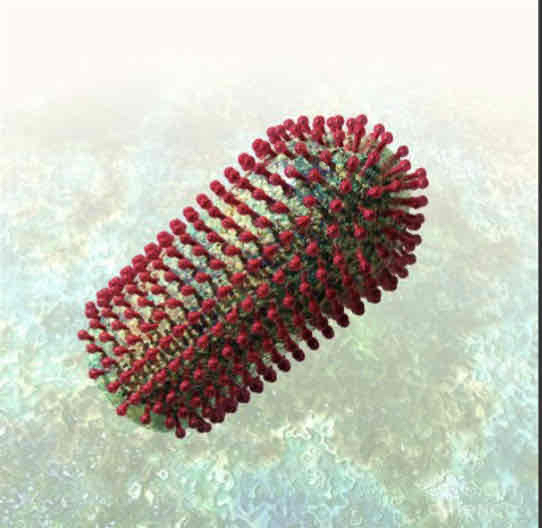
Describe a helical virus
The capsid proteins wind around the nucleic acid, forming a long tube or rodlike structure. Usually helical animal viruses are enveloped. Rabies and ebola are examples of helical viruses
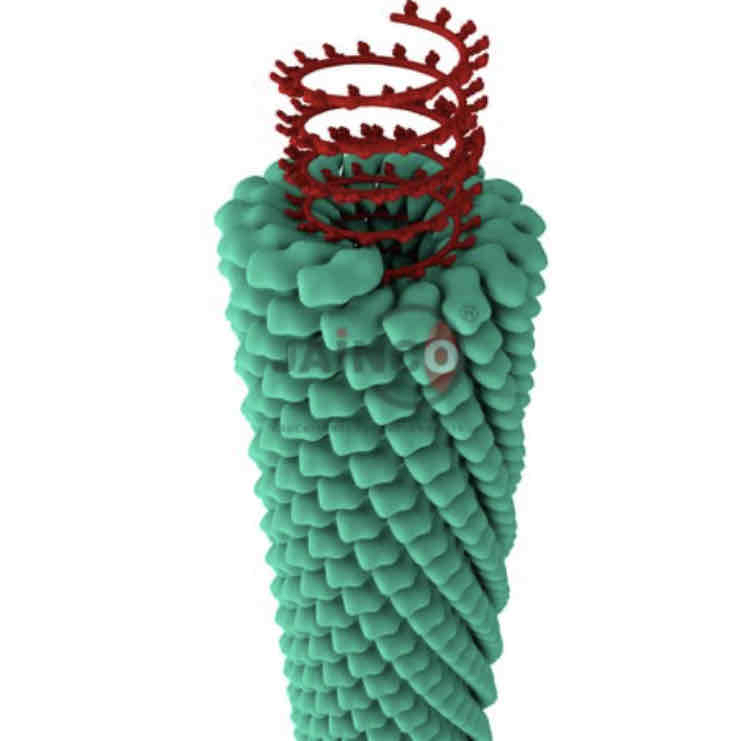

Describe an icosahedral virus
This is a three-dimensional and somewhat round virus. It may or may not have an envelope and example of this virus is parvo virus
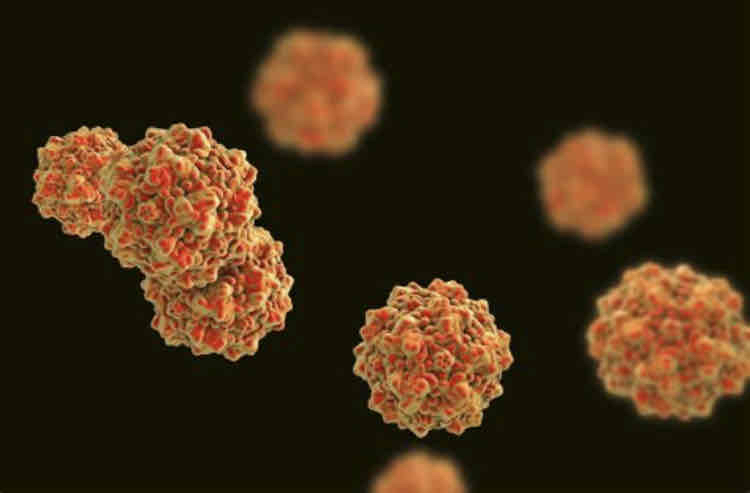
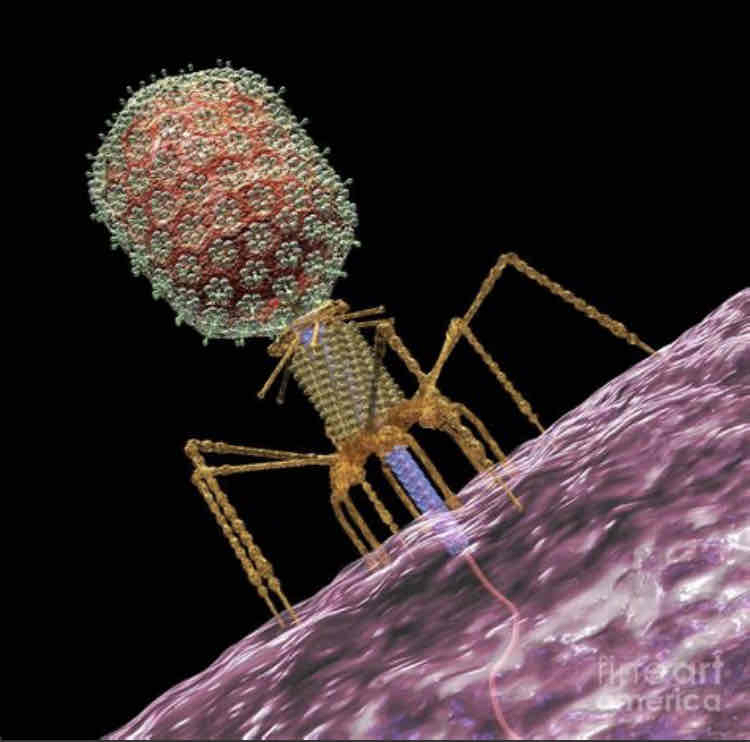
Describe a complex virus
Complex viruses are often a combination of helical, and icosahedral shapes. Examples of complex viruses are pox viruses and bacteriophages.
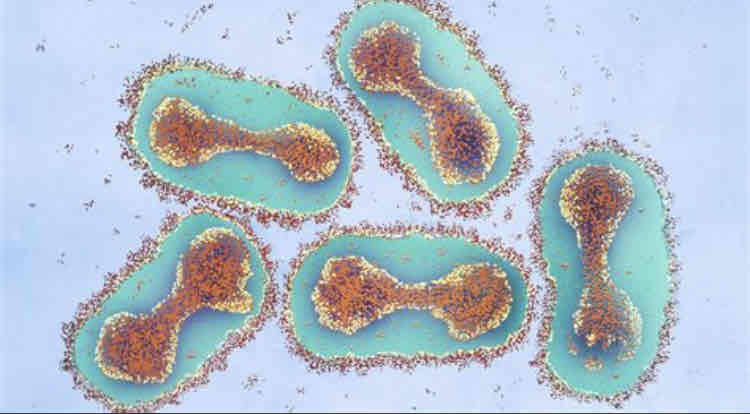
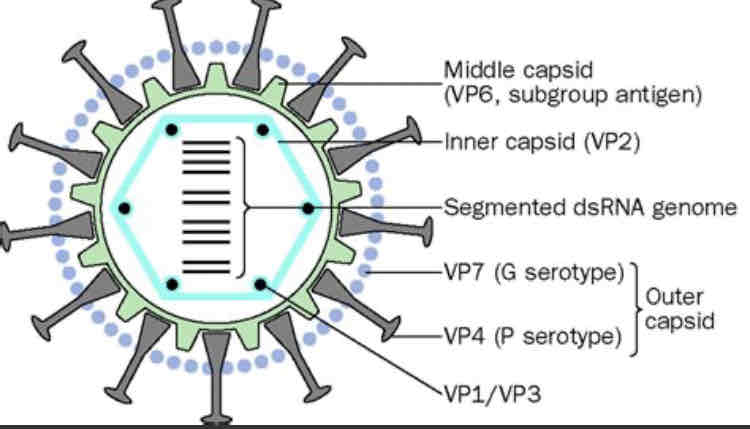
Describe the viral genomes
Viral genome can consist of double-stranded DNA, single-stranded DNA, double-stranded RNA or single-stranded RNA. They contain either DNA or RNA.
The genome is usually a single linear or circular molecule but some viruses have a segmented genome comprised of multiple parts. Examples of segmented genome viruses are influenza and rotavirus.
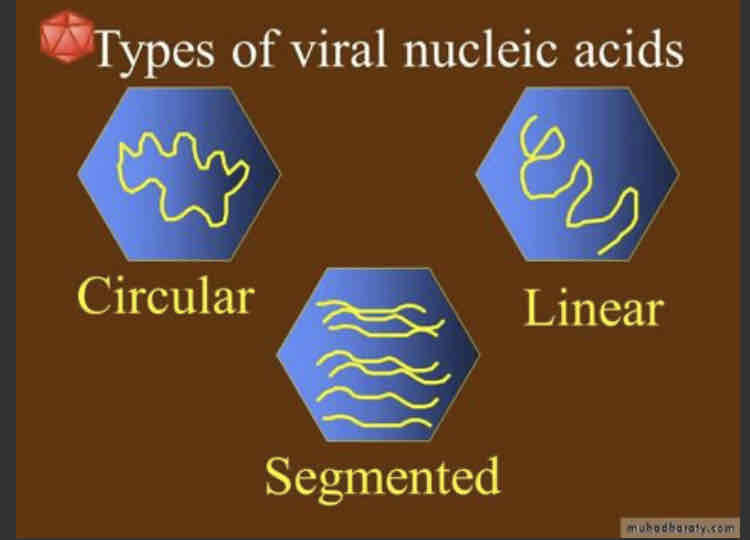
Describe the size of the genomes of viruses
The size of the genome varies markedly. There are only three genes in retrovirus, tens of genes in herpesvirus to hundreds of genes in mimivirus.
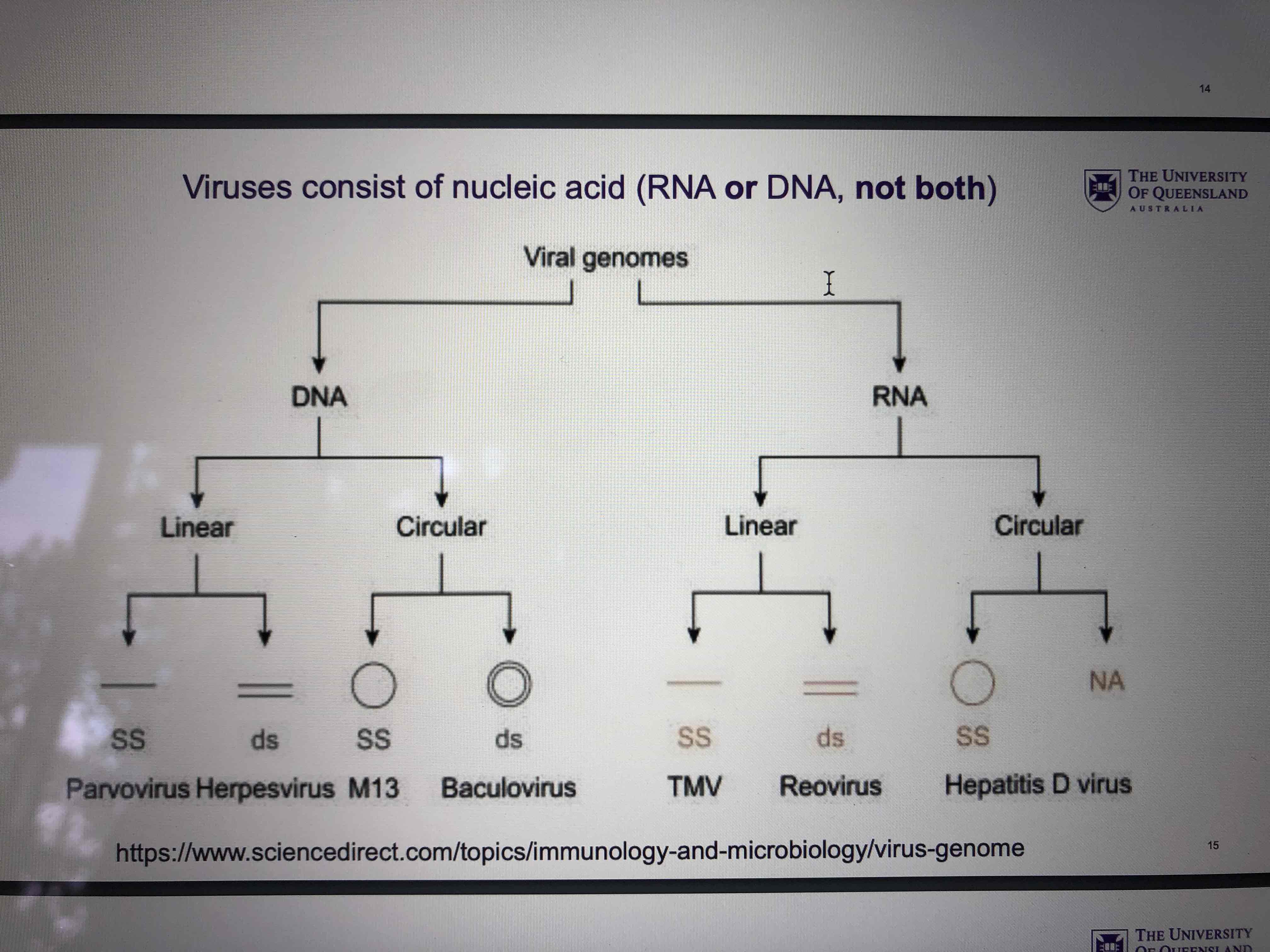
How do viruses infect their host cells and multiply?
Host cell recognition is through surface cell receptors
Viruses use the host cell machinery, which is the energy, organelles and reagents to produce new nucleic acid and proteins.
The new virions assemble and leave the host cell.
The cell is often destroyed in the process.

What is a virion?
It is a complete infectious virus particle
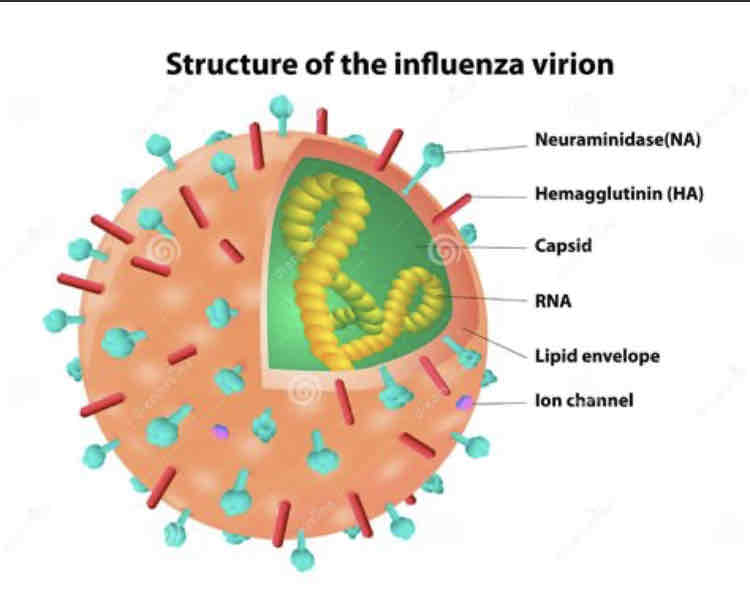
Viruses are classified into groups according to which criteria?
Type of nucleic acid, RNA, or DNA
shape of capsid
whether they possess an envelope or not
the replication strategy
Genomes sequence and organisation
Other criteria such as size, pH sensitivity, host range
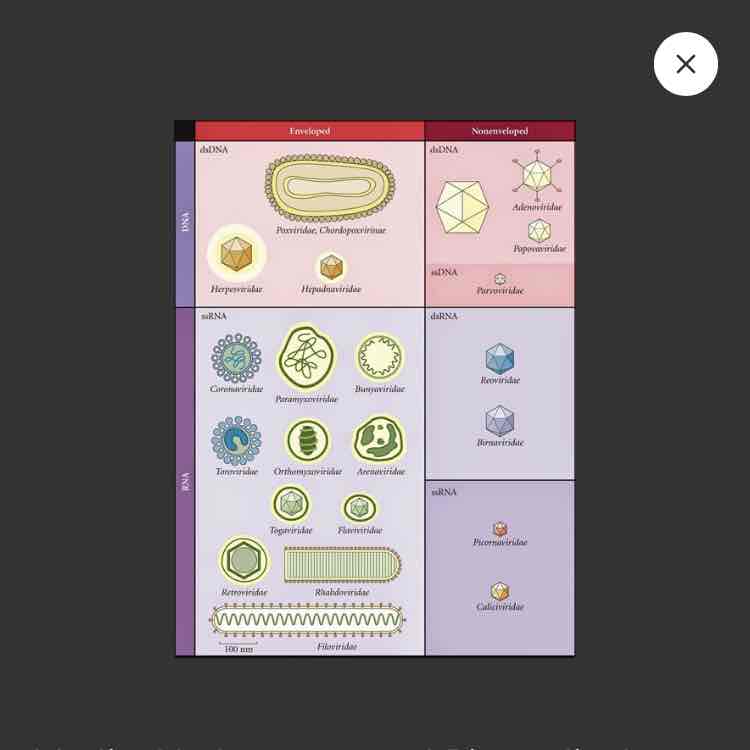
How do we refer to the classification of viruses?
Most commonly, we refer to the virus by family, genus, then species. For example, Picornavirus (family), rhinovirus (genus), common cold viruses (species)
Describe how the species name of viruses is given
Virus species names are often just the name of the disease caused by the virus. For example, Rabies virus causes rabies and Canine distemper virus causes canine distemper. Some viruses are named after the place where they were first isolated. For example, Hendra virus.
Describe the virus evolution theory with the most supporting evidence
We don’t really know as viruses have no geological fossils
Viruses originated independently from host replication systems with several separate viral origins occurring at different times
Viruses may have evolved from complex molecules of protein and nucleic acid at the same time as cells first appeared
RNA viruses may have origins in the era prior to emergence of DNA
DNA viruses are likely to have co-evolved with their hosts while the DNA world was developing.
Why are viruses the top corners of the merging, infectious diseases?
The mutation of existing viruses means we are expanding the host range and increasing the virulence of the virus
Destruction to ecosystems are changing animal and human behaviour, including the mixing of animal species which means that viruses are disseminated more readily
What are some examples of viruses are veterinary significance
Canine parvo virus, canine distemper virus, canine influenza virus, feline herpesvirus, feline calicivirus, foot and mouth disease, swine fever, avian influenza.